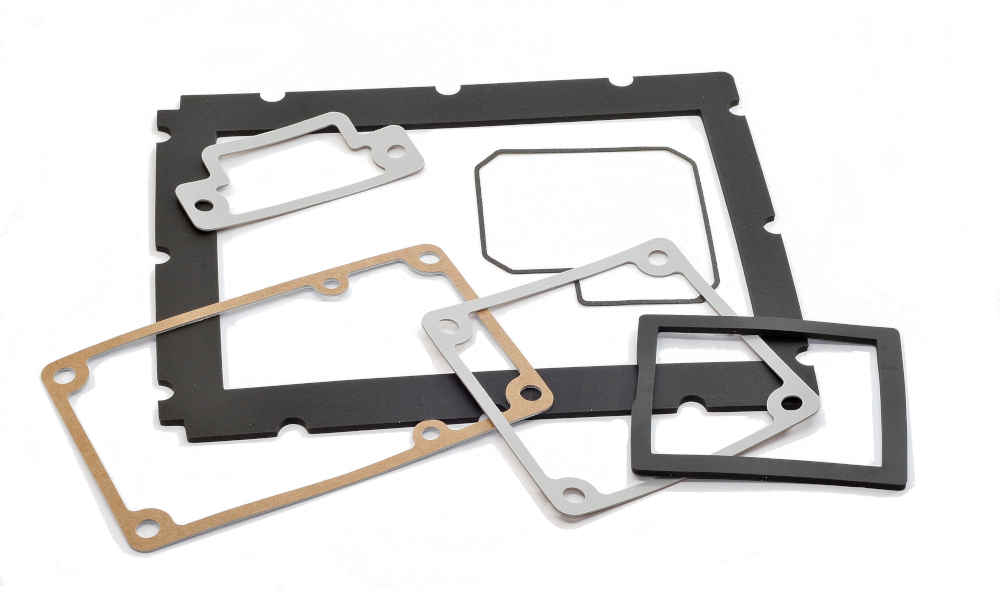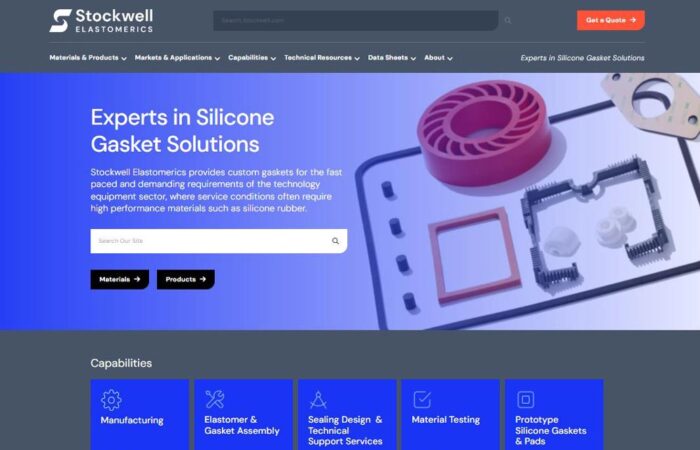
Stockwell Elastomerics manufactures custom weather resistant gaskets to customer specification. Weather resistant gaskets are made from compressible, hydrophobic rubber materials that can withstand ozone and ultraviolet (UV) radiation. Materials such as silicone, epichlorohydrin and EPDM each have pros and cons in applications with weather exposure. Due to the hydrophobic nature of the gasket materials, they are commonly described as waterproof or water resistant. The performance and longevity of weather gaskets should be considered early in a product design. Taking gasket material selection into consideration early in the design cycle allows for more design latitude and cost savings.
What is a Weatherproof Gasket?
Weatherproof gaskets can be defined as gaskets that are able to withstand exposure to weather without damage or loss of function. Weatherproof gaskets aim to protect applications from various rain conditions, blowing dust, dirt accumulation, snow, and hot or cold seasonal conditions. This differs from gaskets designed for water submersion which are in a different class of sealing and typically have a defined IP67 or greater rating. These submerged gaskets typically require different grades of silicone or other elastomers to prevent pressurized water ingress.
Important Points to Consider for Weather Sealing Materials
- Solid or closed cell – Depending on the clamping force and housing material, a soft closed cell sponge (expanded rubber) or a solid rubber should be selected to prevent ingress under wind driven rain and residual ponding of water. Cellular materials require less clamping force, and are more forgiving on less stiff enclosures (typically made from sheet metal or thin plastic).
- Heat resistance – Many outdoor gasket applications sit in direct sunlight where internal temperatures can easily exceed 140°F. Heat cycling can accelerate compression set in many gasket materials, some more so than others
- Freeze resistance – A frozen gasket is susceptible to cracking. Also, as snow and ice melt, a “stiffened” gasket due cold temperatures has the potential to leak
- Low compression set – Gaskets that will be compressed and re-compressed need to be able to rebound. Enclosure door gaskets are a good example of an application where the gasket rebound is crucial.
- UV and ozone resistance – Some outdoor enclosures house electrical components that generate ozone and others have the edge of the gasket exposed to UV. UV and ozone resistance should be considered when selecting a gasket material.
Material Selection for Weather Resistant Gaskets
Stockwell Elastomerics inventories many materials well suited for outdoor environmental sealing. Application details can make a big difference in cost and performance. Selecting the best material based on an enclosure design, environmental conditions, volume, and anticipated life expectancy are taken into consideration when Stockwell Elastomerics recommends a material and manufacturing process. Stockwell Elastomerics encourages testing and offers cut material samples for proof of concept.
Contact Stockwell Elastomerics for Weather Resistant Gaskets
Contact Us for further assistance with custom gaskets for applications requiring weather resistance and weather sealing.

